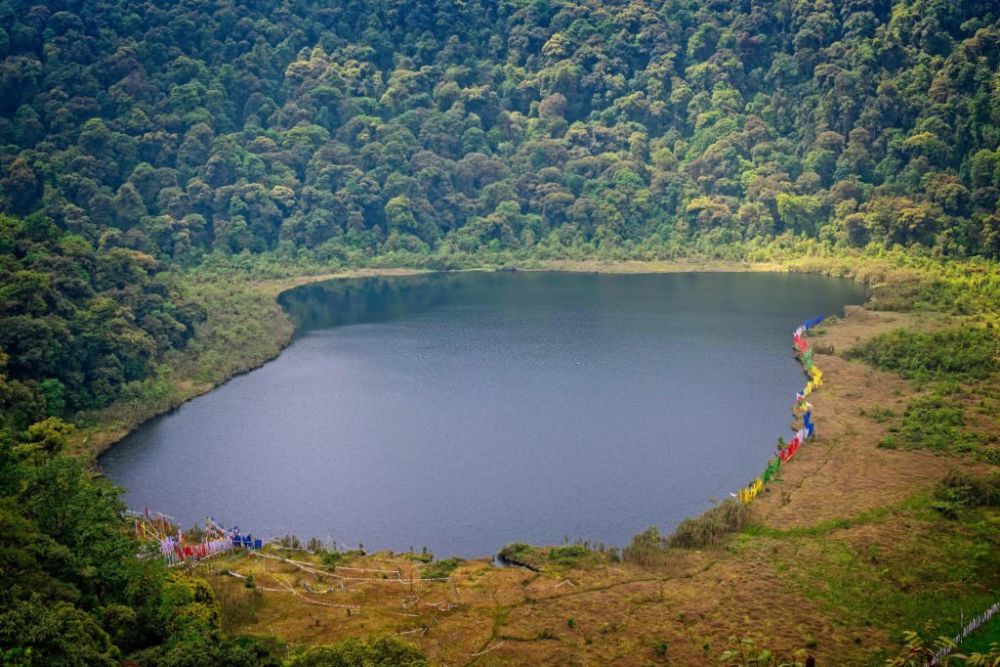

Khecheopalri Lake, situated near Pelling in West Sikkim, India, is a significant pilgrimage site for both Buddhists and Hindus. The history of tourism at Khecheopalri Lake is deeply intertwined with its religious significance and natural beauty.
The lake, which is considered to be sacred, is believed to be a wish-fulfilling lake by the locals. According to Buddhist tradition, it is associated with Guru Padmasambhava, also known as Guru Rinpoche, who is credited with the introduction of Buddhism to the region in the 8th century. Hindus, on the other hand, associate it with the goddess Tara. The religious celebrations at the lake have historically attracted pilgrims and tourists alike.
The initial influx of visitors to Khecheopalri Lake were mainly pilgrims, but over time, the area became popular with nature lovers and trekkers. In the 20th century, as infrastructure in Sikkim improved and political stability increased after its merger with India in 1975, tourism flourished.
Recognizing the ecological significance of the Khecheopalri Lake and its surrounding areas, eco-tourism initiatives have seen a rise. Efforts have been made to preserve the sanctity and cleanliness of the lake, as it is said that not even a leaf can be seen floating on the water; birds are known to pick them up promptly.
In recent years, there has been a focus on sustainable tourism. Accommodations such as homestays and eco-friendly hotels encourage tourists to have a minimal environmental impact. Activities include trekking, bird watching, and participating in cultural and spiritual festivals like the annual Cho-Puja and Maghe Purne.
Improved connectivity has also helped in making Khecheopalri Lake more accessible to tourists. While the area retains its natural charm, there are now better roads, communication facilities, and even internet access in nearby Pelling, which serves as the gateway to the lake.
The history of tourism at Khecheopalri Lake reflects a transition from a secluded pilgrimage spot to a well-known ecological and spiritual destination. Modern tourism respects the lake’s religious heritage and natural ecosystem, balancing visitor needs with conservation efforts.